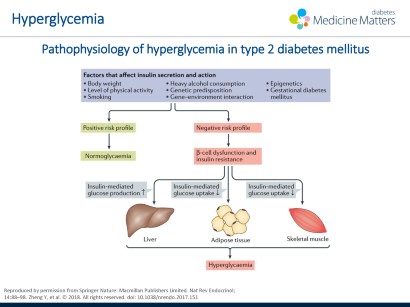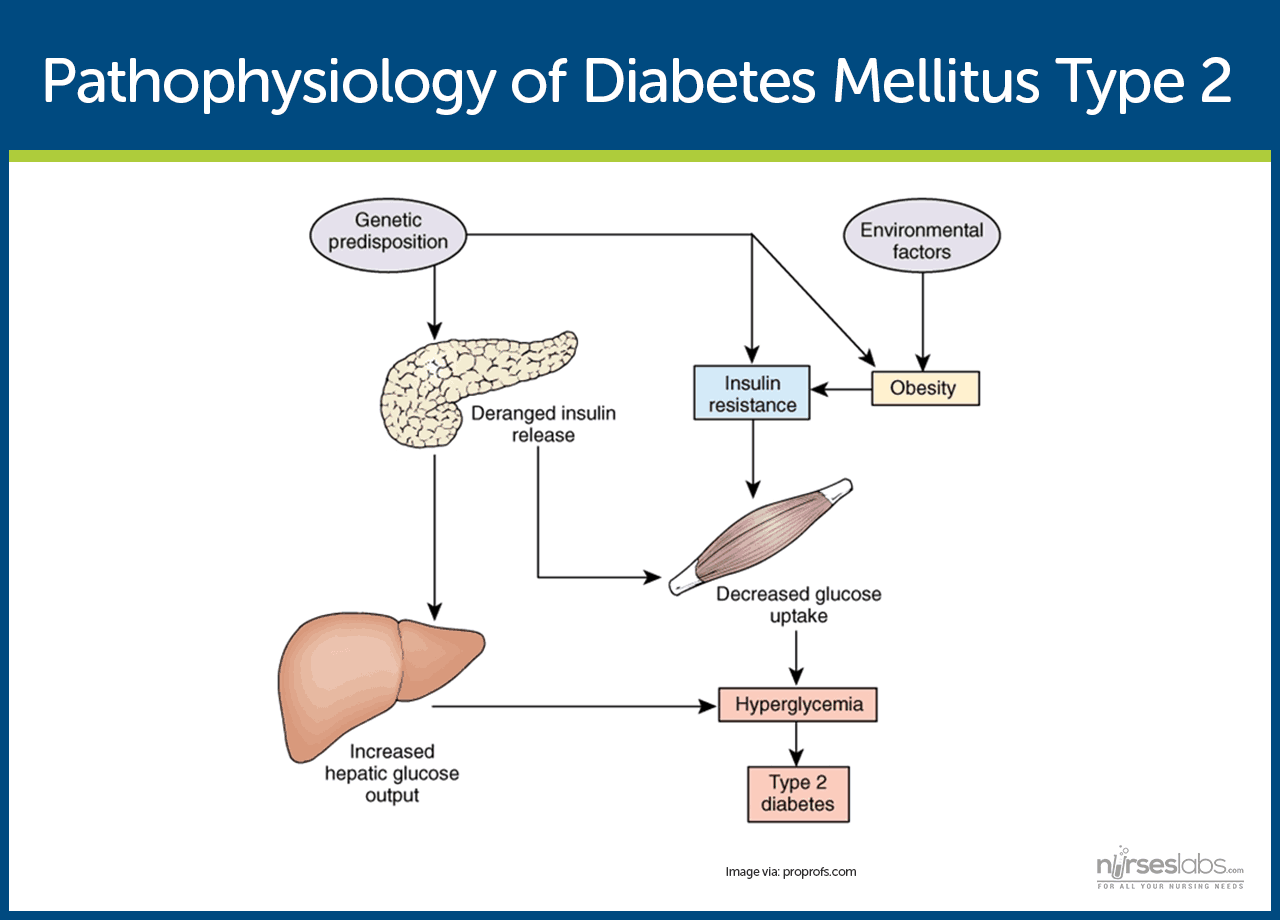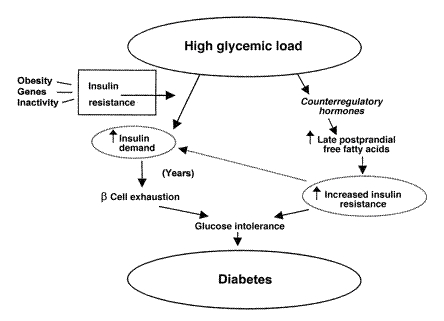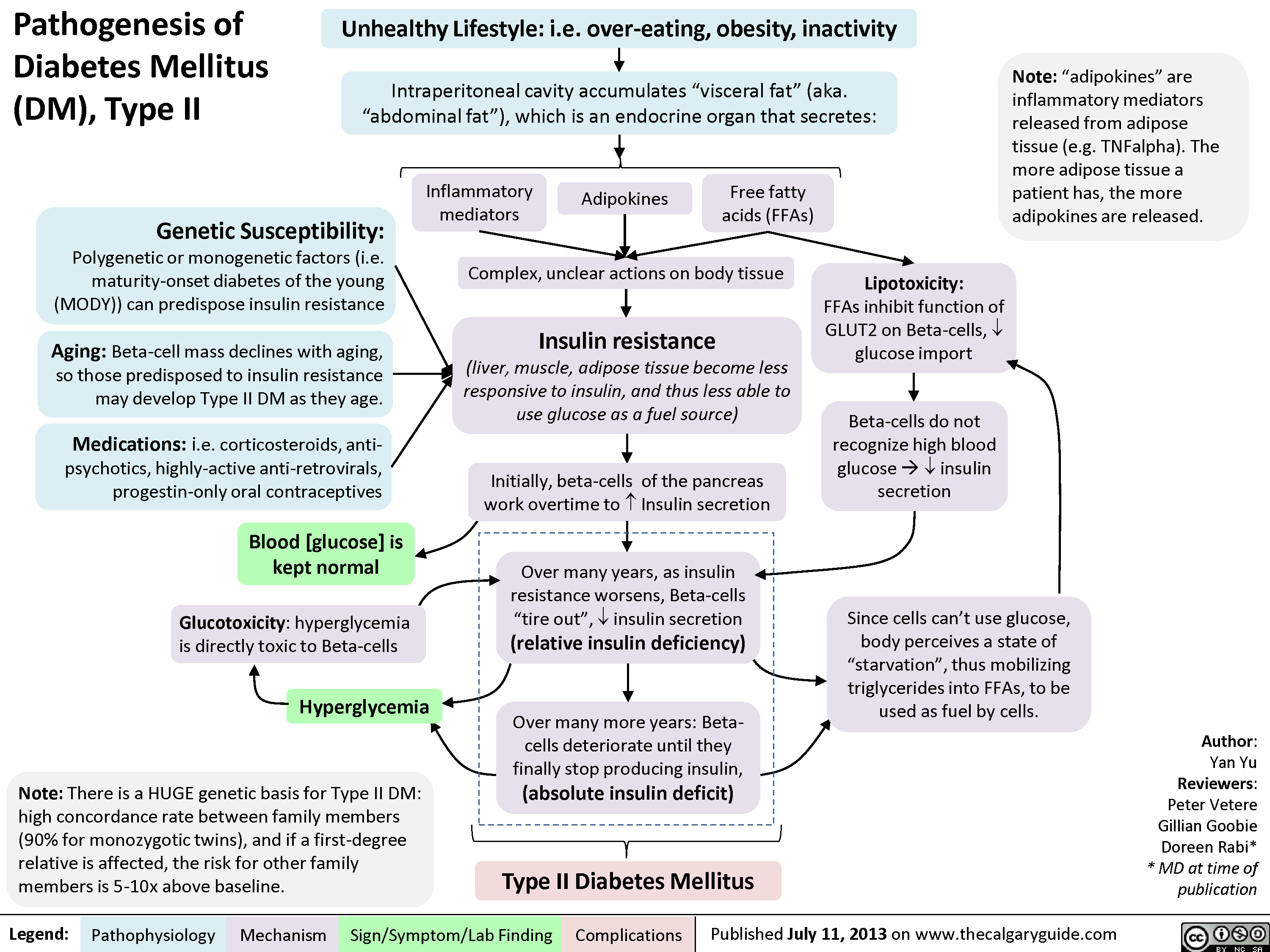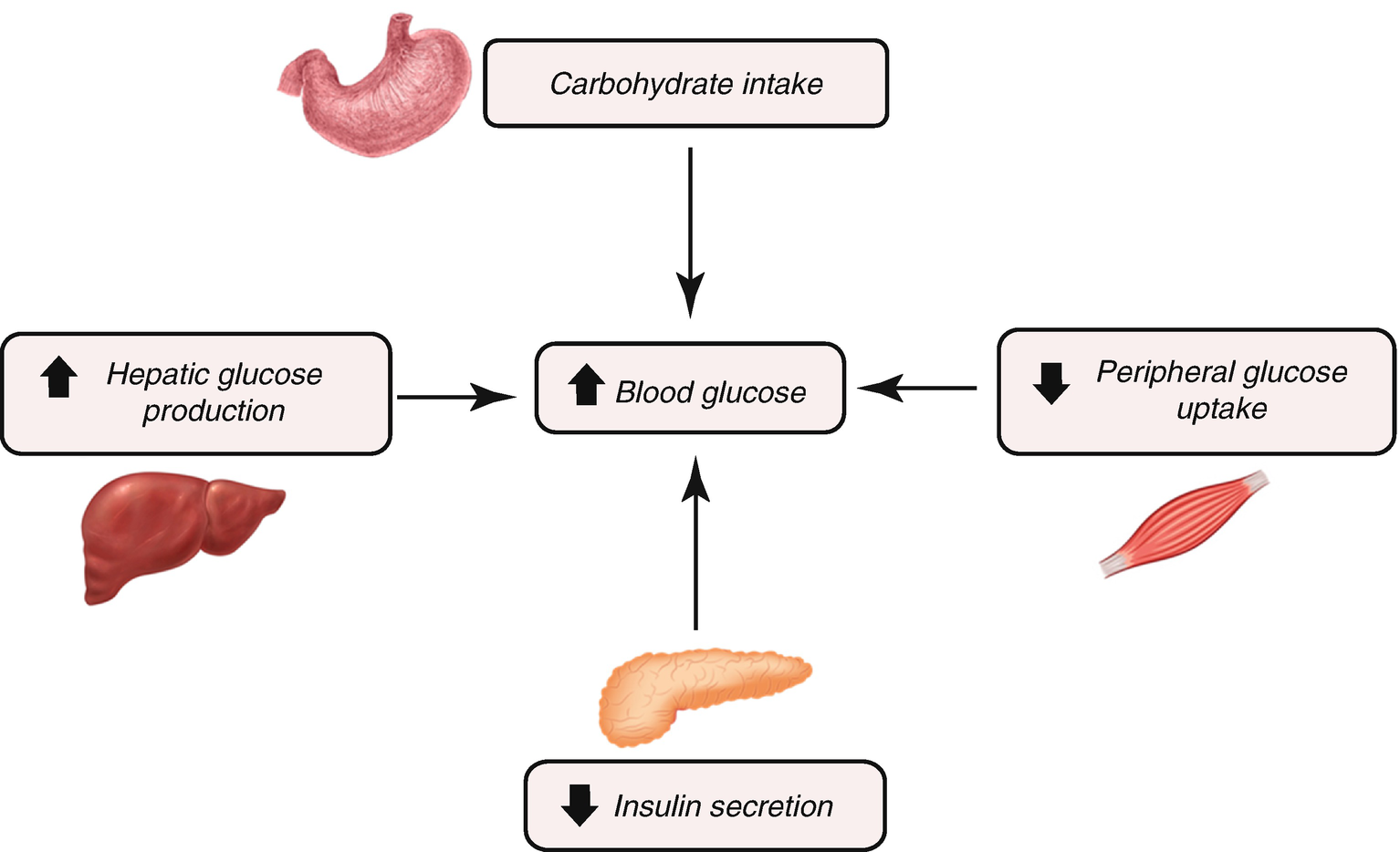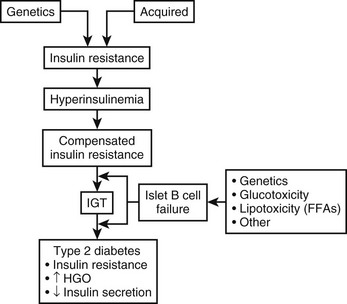Diabetes Mellitus Type 2 Pathophysiology
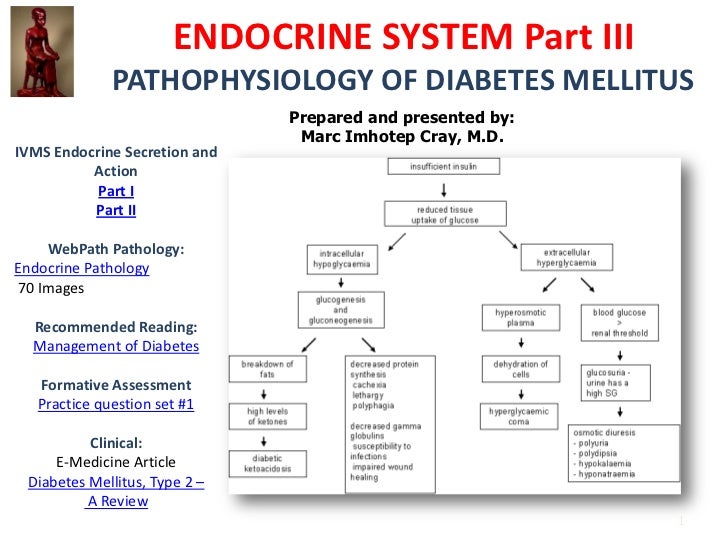
The pathophysiology of diabetes is related to the levels of insulin within the body and the body s ability to utilize insulin.
Diabetes mellitus type 2 pathophysiology. Type 2 diabetes mellitus consists of an array of dysfunctions characterized by hyperglycemia and resulting from the combination of resistance to insulin action inadequate insulin secretion and. Type 2 diabetes is a chronic condition that affects the way your body metabolizes sugar glucose an important source of fuel for your body. With type 2 diabetes your body either resists the effects of insulin a hormone that regulates the movement of sugar into your cells or doesn t produce enough insulin to maintain normal glucose levels. Type 2 diabetes mellitus is a heterogeneous syndrome characterized by abnormalities in carbohydrate and fat metabolism.
The causes of type 2 diabetes are multi factorial and include both genetic and environmental elements that affect beta cell function and tissue muscle liver adipose tissue pancreas insulin sensitivity. Pathophysiology the pathophysiology of all types of diabetes is related to the hormone insulin which is secreted by the beta cells of the pancreas. Normally the pancreatic beta cells release insulin due to increased blood glucose. Diabetes mellitus type 2 is a condition that typically begins with a resistance to insulin by cells of the body that worsens over time.
This resistance and the compensating production of insulin by pancreatic beta cells may eventually lead to beta cell failure. Pathology of type 2 diabetes in type 2 diabetes the body either produces inadequate amounts of insulin to meet the demands of the body or insulin resistance has developed.
